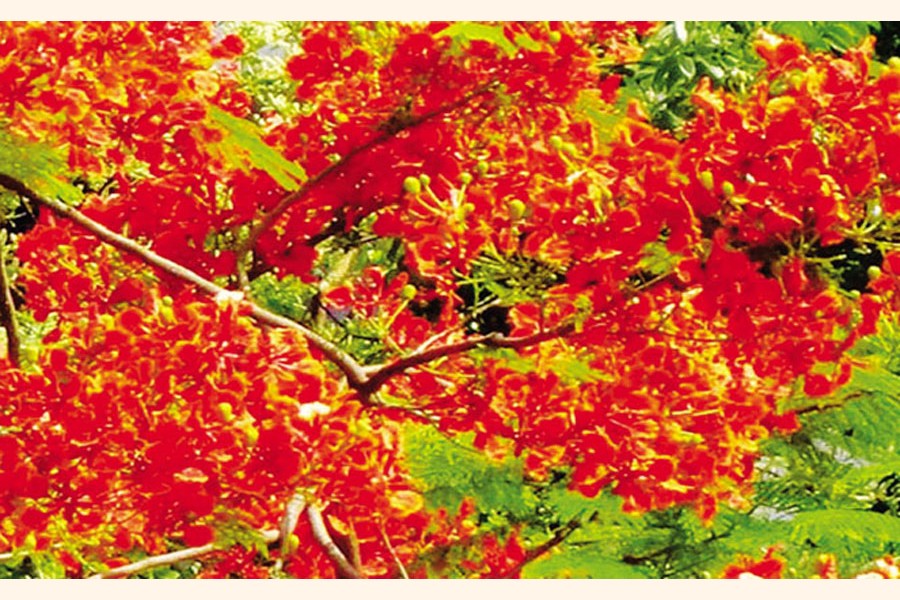
Published :
Updated :

This is the Basanta (spring), the king of seasons in this part of the world. But is it pronounced enough in Nature and people's life? In the first month of the two considered spring on the Bangla calendar, there is hardly any remarkable sign of the great season. Leaves of trees are pale, a few denuded with the shedding of leaves but where are the collective preparations for welcoming the season of all seasons? Yes, the air is pleasant after the winter that is no longer as chilly as it was before but there is hardly any visible sign of reawakening in Nature. With the start of Chaitra some trees get adorned with shining green leaves but the rest are still hesitant. By this time, it is already scorching heat that makes movement in the open irksome.
The spring still makes its royal return in the colder countries where winter is awfully chilly with temperature dipping below 0 degree Celsius and snow covering all things under it. The trees barely stand looking like they are dead as the snow covered branches do not have leaves. However, no sooner does the spring announce its arrival than they arise like the proverbial phoenix from the ashes. Life is in the throes of rejuvenation and a spirit of the order of Elan vital bursts forth all around.
In fact, spring is short-lived in this country and most other tropical countries. The aggressive summer has claimed more than its due with the climate change and summer, as everyone is aware, is the most dreaded season here. But it is not so in the regions where winter is most oppressive. One does not have to cite examples of Western countries to make this point clear. In Kashmir, they lovingly call their summer month "Lady May".
The weather is still cold, in fact colder than the high winter in Bangladesh, but the transformation Nature undergoes at the time is unbelievable. Apart from the Apple orchards which no longer have fruits on them, there is literally a commotion in the world of vegetation as if one can hear it. The sparkling green leaves are on the boughs but more importantly there seems to be a competition among trees to make a display of flowers of all shapes, sizes and colours. Some trees are so generous that they give out flowers from their trunks or stems so profusely that the tree itself gets hidden.
Sure enough, palash (flame of the forest), krishnachura (royal poinciana or flamboyant), shimul (cotton tree) and sonal or sonalu (golden shower) are most colourful. If any of these species are planted like the cherries in Japan or South Korea, they will become a celestial sight to behold! But by the time they bloom and exhibit their regal beauty, the weather is no longer pleasant. Is this the only reason why there is no such celebration of these flowers like that of cherries?
Perhaps not! Flowers bloom not only on the boughs but also in the mind's eye of people. In Japan cherry festival is an important event because it celebrates regeneration of life and beauty together. No wonder, people from different countries in the world join the festival to see the beautiful soothing picture Nature paints on trees. In fact, the Japanese are connoisseurs of art and try to make things around them as much artistic as possible even in their day-to-day life.
In Bangladesh, the use of flowers in socialisation and ceremonial purposes has increased phenomenally but how many people stop to appreciate the flowers in the wild or on the roadside that create an enchanting world of their own? A separate row of palsh, krishnachura, sonal, shimul and jarul (queen's flower) each can be planted on roadsides. Those planted around the Jatiya Sangsad are not enough. Then it would be appropriate to have a festival of palash and krishnachura. This is how we can make up for the waning spring.


 For all latest news, follow The Financial Express Google News channel.
For all latest news, follow The Financial Express Google News channel.